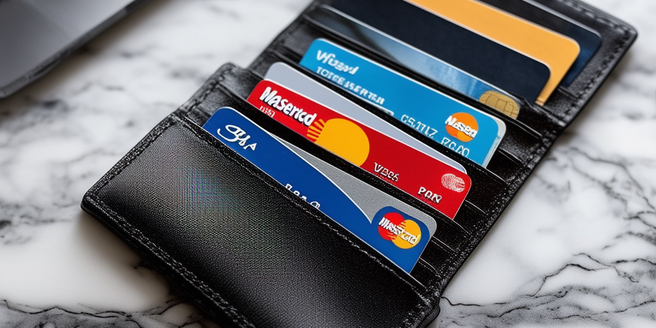Understanding Different Credit Card Types
To effectively navigate the various credit card options available, it’s essential to understand the differences among them. There are several types of credit cards, including rewards cards, cash back cards, and travel cards, each tailored to specific spending habits and goals. Rewards cards offer points or miles for purchases, ideal for those who wish to redeem perks for travel or merchandise. Cash back cards provide a percentage of purchases back, great for maximizing everyday savings. Meanwhile, travel cards often include features useful for frequent flyers, such as no foreign transaction fees and travel insurance. Knowing your financial needs and habits helps in selecting the most beneficial card type, ensuring you get the most out of your credit transactions.
Online Payment Options and Security Tips
The digital age has ushered in various online payment options, increasing convenience but also raising security concerns. Using secure payment platforms such as PayPal or Apple Pay can protect your card information, as these services often incorporate encryption to safeguard transactions. Implementing strong passwords and utilizing two-factor authentication further strengthens security. It’s critical to monitor transactions regularly and report suspicious activity to your credit card issuer immediately. Being informed about phishing scams and avoiding public Wi-Fi networks for transactions can also prevent fraud. By being vigilant and choosing secure payment methods, consumers can enjoy the convenience of online shopping while minimizing risks.
Using Mobile Wallets for Credit Card Transactions
Mobile wallets, like Apple Pay and Google Wallet, allow users to handle credit card transactions directly from their smartphones, providing a seamless and efficient payment experience. These apps securely store your card information and facilitate contactless payments at retail locations by using NFC technology. One of the significant benefits of mobile wallets is the added security layer; they generate a unique transaction code, ensuring your actual card details are not exposed. Additionally, mobile wallets can store multiple credit cards, making it easier to manage finances on the go. Ensuring your device is secured with a passcode or biometric authentication further enhances the safety of using mobile wallets.
Benefits of Contactless Credit Card Payments
Contactless credit card payments have become increasingly popular due to their speed and convenience. By simply tapping your card on the payment terminal, transactions are completed in seconds, significantly reducing wait times at checkout. This technology uses RFID or NFC, ensuring secure data transmission without requiring swipes or PIN entry. The contactless method also promotes hygiene, as it minimizes the need for touching terminals, which is particularly advantageous in health-conscious climates. Furthermore, most contactless transactions have low-value limits, adding an extra layer of security by limiting exposure to potential fraud. As adoption grows, the efficiency and affordability of contactless payments continue to enhance consumer experience.
How to Manage Credit Card Payment Due Dates
Effectively managing credit card payment due dates is crucial in maintaining a healthy credit score and avoiding late fees. It is advisable to keep track of due dates by setting up reminders on your phone or using financial apps that alert you ahead of time. Aligning payment due dates with your payday can also help in ensuring timely payments. Consider setting up automatic payments for at least the minimum amount due, thus avoiding late charges if you overlook a manual payment. Regularly review your billing statement for any discrepancies and contact your issuer immediately if any errors are noted. Responsible management helps in maintaining credit health and financial stability.
Troubleshooting Common Payment Issues
When encountering common payment issues such as declines or transaction errors, it’s important to troubleshoot promptly to avoid inconvenience. Begin by checking for card expiry dates and ensuring you have sufficient credit limit available. Verify with your bank if there are any restrictions on your card or if your transaction was flagged for potential fraud. Sometimes technological glitches occur within the point-of-sale system, so attempting the transaction later can resolve the issue. Additionally, keeping your bank’s customer service contact handy can be helpful in quickly resolving any unplanned hiccups, ensuring minimal disruption in your payment process.


